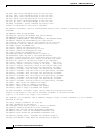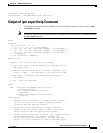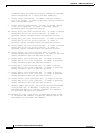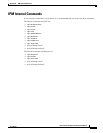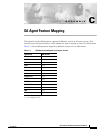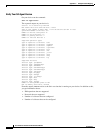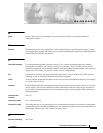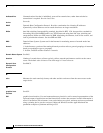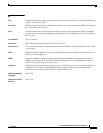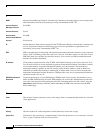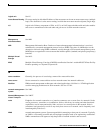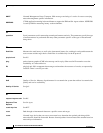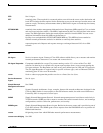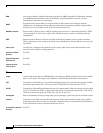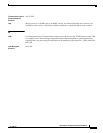
Glossary
GL-2
User Guide for Internetwork Performance Monitor
OL-11291-01
dedicated line
Communications line that is indefinitely reserved for transmissions, rather than switched as
transmission is required. See also
leased line.
device
See node.
DHCP
Dynamic Host Configuration Protocol. Provides a mechanism for allocating IP addresses
dynamically so that addresses can be reused when hosts no longer need them.
DLSw
data-link switching. Interoperability standard, described in RFC 1434, that provides a method for
forwarding SNA and NetBIOS traffic over TCP/IP networks using data-link layer switching and
encapsulation. DLSw uses SSP instead of SRB, eliminating the timeouts, lack of flow control, and
lack of prioritization schemes. See also SRB and SSP.
DNS
Domain Name System. System used in the Internet for translating names of network nodes into
addresses.
domain
1. In the Internet, a portion of the naming hierarchy tree that refers to general groupings of networks
based on organization-type or geography.
2. In SNA, an SSCP and the resources it controls.
Domain Name System
See DNS.
duration
Number of seconds that a collector actively collects network performance statistics at the source
router. The default value is forever. The valid range is 1 hour to forever.
Dynamic Host
Configuration
Protocol
See DHCP.
E
echo
Measures the total round-trip latency and other statistics and errors from the source router to the
target device.
G
graphical user
interface
See GUI.
GUI
graphical user interface. User environment that uses pictorial as well as textual representations of the
input and output of applications and the hierarchical or other data structure in which information is
stored. Conventions such as buttons, icons, and windows are typical, and many actions are performed
using a pointing device (such as a mouse). Microsoft Windows and the Apple Macintosh are
prominent examples of platforms utilizing a GUI.



